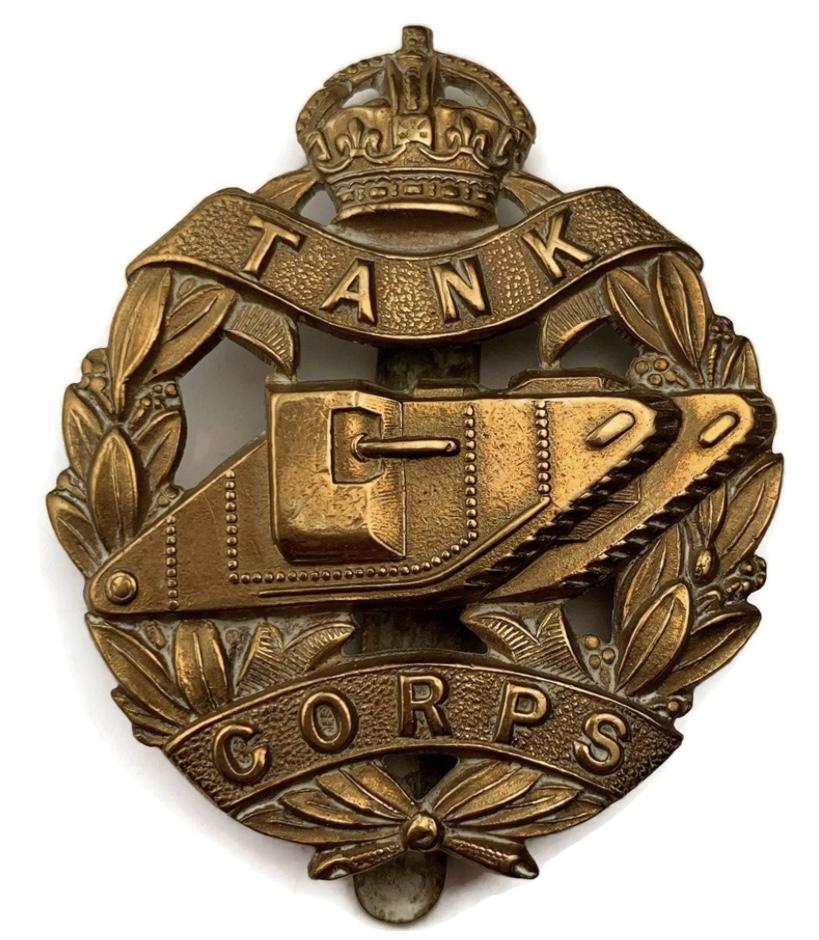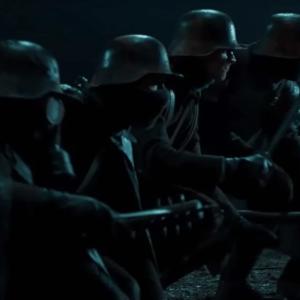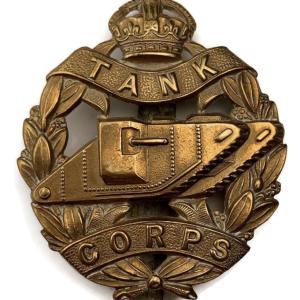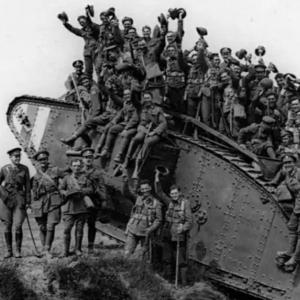
WW1 British Tank Corp Badge
The cap badge of the British Tank Corps is one of the most recognisable and symbolic pieces of military insignia produced in the First World War. It carries within its design the story of a brand-new arm of warfare, the secrecy around its creation, and the organisational development of the world’s first main battle tank units.
The badge most commonly associated with the Tank Corps of the Great War is the badge that features a scrolling caterpillar-tracked heavy tank, shown from the side and angled upwards, encircled by a laurel or oak wreath, and surmounted by the royal crown. There was no single officially recorded individual designer, though the origin is tied directly to the early staff of the Tank Supply Committee and the Mark I tank itself. The earliest sketches for the emblem can be traced back to the time the heavy branch of the Machine Gun Corps was being formalized in late 1916. The design evolved out of the fact that the public, government, and military were becoming aware, by the time of the Battle of Flers-Courcelette, that the new machines called tanks were a new permanent arm and not a one-off experiment. The design was likely refined jointly between the War Office Pattern Room, the heraldic advisers attached to the General Staff, and the heavy branch officers who recommended that the cap badge should show the weapon itself rather than abstract crossed guns like artillery.
Early production orders for the badge were placed with several of the standard British badge makers who were already producing badges for infantry and cavalry. These included firms such as Gaunt of London and Ludlow. The badges were die-struck, typically in gilding metal or brass for enlisted ranks, with higher-finish items for officers in bronze or silver finishes. Exact production numbers are very difficult to quantify because badge production in wartime was distributed across multiple contractors, and badges were made as formations expanded. However, by the time that the Tank Corps reached its full strength in the later phase of the war, production of the badge was in the tens of thousands. Tank units grew rapidly from 1917 to 1918. The heavy branch of the Machine Gun Corps officially became the Tank Corps on 28 July 1917, and this is the period that marks the general introduction of the recognised Tank Corps badge pattern to uniform. Variants exist because wartime production was not uniform, but the base design was consistent.
The badge remained in use throughout the remainder of the Great War and into the interwar years. In 1923 the Tank Corps became the Royal Tank Corps, and then in 1939 became the Royal Tank Regiment. The iconography of the badge persisted through these changes. The core element of the badge, the tank motif in profile, has astonishing longevity. Even after the monarchy changed, and after the Tank Corps had become a regiment rather than a corps, the essential concept of a tank as the centre of the cap badge continued. The modern Royal Tank Regiment badge is still recognisably descended from the First World War badge, although crowns have changed with the reigns, and certain details have been refined. In practical terms the design born in 1917 is still in service presently, more than a century later, making it one of the longest continuously used design lineages in British military insignia.










